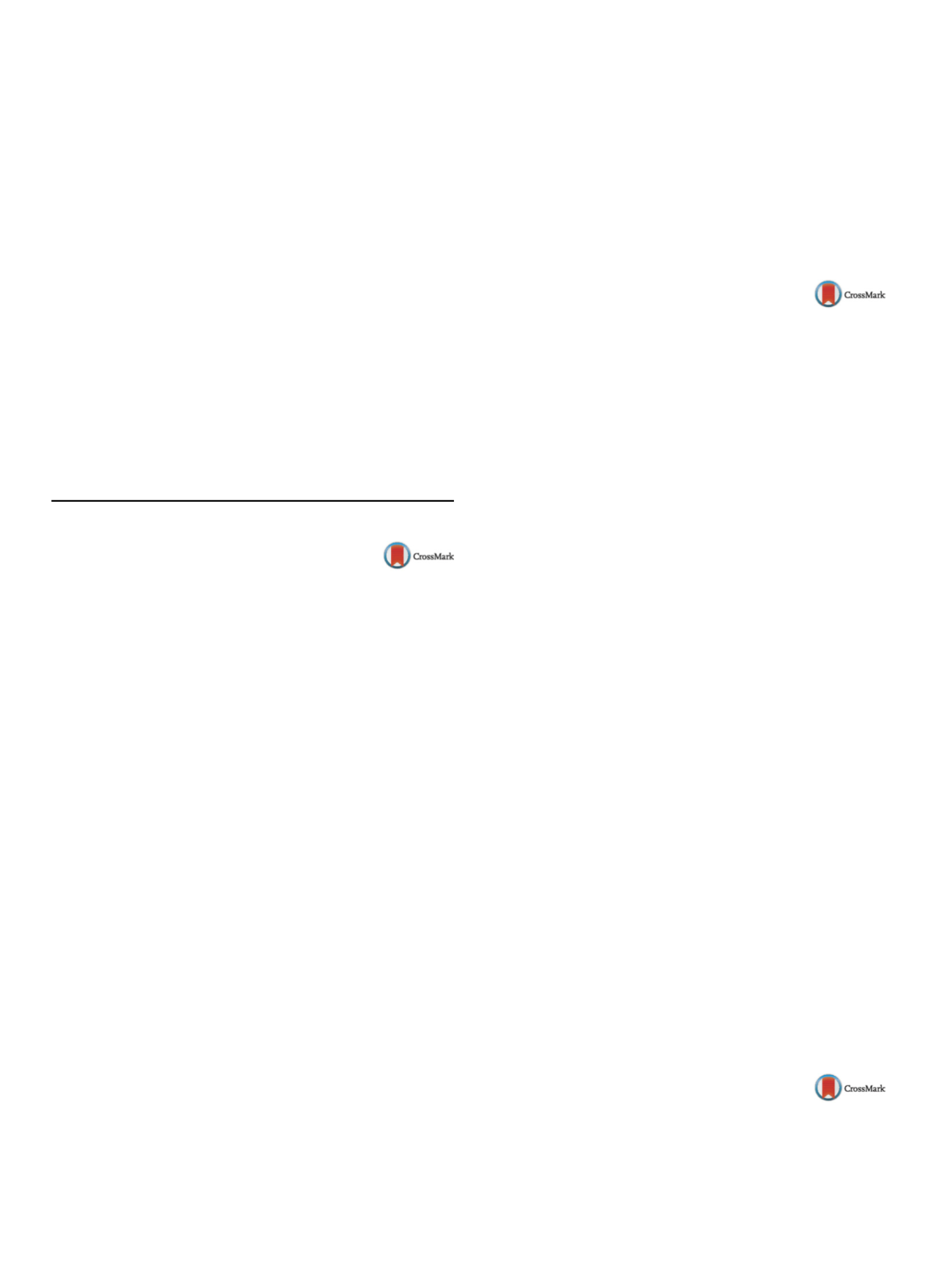

S96
25th European Congress of Psychiatry / European Psychiatry 41S (2017) S69–S105
forest model with sociocultural and clinical variables as features to
train the models.
Results
Both classification models performed similarly in iden-
tifying suicide attempters and non-attempters. Our regularized
logistic regression model demonstrated an accuracy of 66% and an
area under the curve (AUC) of 0.71, while the random forest model
demonstrated 65% accuracy and an AUC of 0.67.
Conclusion
Machine learning algorithms offer a relatively suc-
cessful method for incorporating many clinical features to predict
individuals at risk for future suicide attempts. Increased perfor-
mance of these models using clinically relevant variables offers the
potential to facilitate early treatment and intervention to prevent
future suicide attempts.
Disclosure of interest
The authors have not supplied their decla-
ration of competing interest.
http://dx.doi.org/10.1016/j.eurpsy.2017.01.297Oral communications: Genetics & molecular
neurobiology; neuroimaging; psychosurgery &
stimulation methods (ECT, TMS, VNS, DBS) and
others
O076
A hybrid
effectiveness-implementation trial of
wellness self-management program
for patients with severe mental illness
in an Italian day hospital setting
D. Palumbo
1 ,∗
, S. Landi
1, P. Margolies
2, A.-J. Salerno
3, A. Cleek
4,
E. Castaldo
5, A. Mucci
11
University of Naples SUN, Department of Psychiatry, Naples, Italy
2
Columbia University and New York State Psychiatric Insitute,
Department of Psychiatry, New York City, USA
3
Institute for Poverty Policy and Research NYU Silver School of Social
Work, Department of Psychiatry, New York City, USA
4
McSilver Institute for Poverty Policy and Research NYU Silver School
of Social Work, Department of Psychiatry, New York City, USA
5
University Hospital “San Giovanni di Dio e Ruggi d’Aragona”,
Department of Psychiatry, Salerno, Italy
∗
Corresponding author.
Introduction
Wellness self-management is an adaptation and
expansion of the illness management and recovery, an interna-
tionally recognized best practice. WSM is a recovery-oriented,
curriculum-based practice designed to help adults with severe
mental health problems make decisions and take action to manage
symptoms and improve their quality of life.
Objectives
In the present study, the Italian translation of the
WSM was implemented and validated. Moreover, the impact of its
application in a day hospital setting on cognitive functions, psy-
chopathology, personal resources and real-life functioning with
respect to treatment as usual (TAU) was investigated.
Aims
The study was aimed at assessing the effectiveness of a
semi-structured version ofWSMin a day hospital setting in patients
with severe mental illness.
Methods
Fourteen patients with a diagnosis of severe mental ill-
ness were recruited and randomly assigned to either WSM or TAU.
WSM participants attended four 2-hour sessions per week for 1
month, including lessons selected on the basis of the goals of par-
ticipants. Both groups received weekly planned treatment in the
day-hospital setting and continued their pharmacotherapy.
Results
The two groups of patients were comparable for age,
education, cognitive functioning and psychopathological severity.
WSMproduced a significantly greater improvement in neurocogni-
tion, psychopathology, personal resources and real-life functioning
with respect to TAU.
Conclusions
Our results offer promising preliminary evidence
that the use of WSM provides an effective complement to current
mental health treatment.
Disclosure of interest
The authors have not supplied their decla-
ration of competing interest.
http://dx.doi.org/10.1016/j.eurpsy.2017.01.298O077
The impact of premorbid functioning
on outcome indices in a large sample
of Italian patients with schizophrenia
P. Bucci
1 ,∗
, S. Galderisi
1, A. Rossi
2, P. Rocca
3, A. Bertolino
4,
A. Mucci
1, M. Maj
11
University of Naples SUN, Psychiatry, Naples, Italy
2
University of L’Aquila, 2 Department of Biotechnological and
Applied ClinicalSciences–Section of Psychiatry, L’Aquila, Italy
3
University of Turin, 3 Department of Neuroscience–Section of
Psychiatry, Turin, Italy
4
University of Bari, Department of Neurological and Psychiatric
Sciences, Bari, Italy
∗
Corresponding author.
Introduction
An impairment of premorbid adjustment (PA) has
been regarded among poor prognostic indicators of schizophre-
nia. Some discrepancies in the literature suggest the usefulness of
further characterizations of its impact on different aspects of the
disease.
Aims
The present study aimed to investigate the association
of poor PA with psychopathology, neurocognition and real-life
functioning in patients with schizophrenia recruited within the
multicenter study of the Italian network for research on psychoses.
functioning during childhood and adolescence (early adjustment)
was assessed also in a group of healthy controls (HC) and one of
unaffected relatives of patients (UR).
Methods
Group comparisons were performed between patients
with poor and those with good PA. Differences in frequency of
poor early adjustment were investigated among patients, HC and
UR.
Results
Patientswithpoor PA, as compared to thosewith good PA,
showed earlier age of onset, more severe negative symptoms and
disorganization, greater impairment on all cognitive domains with
the exception of attention/vigilance andworse real-life functioning
in the considered areas (interpersonal relationships, community
activities and work abilities). The pattern of poor early adjustment
was more frequent in patients with respect to UR and HC and, to a
less degree, in UR with respect to HC.
Conclusions
Our findings confirm that poor PA in schizophre-
nia is associated with poorer illness outcome, and offer a further
characterization of PA impact on different psychopathological and
cognitive domains. They also suggest that poor early adjustment is
a candidate endophenotype of schizophrenia, occurring in patients
and their unaffected relatives.
Disclosure of interest
The authors have not supplied their decla-
ration of competing interest.
http://dx.doi.org/10.1016/j.eurpsy.2017.01.299O078
Electrophysiological correlates of
negative symptom domains in
schizophrenia
G.-M. Giordano
1 ,∗
, T. Koenig
2, A. Mucci
1, A. Vignapiano
1,
A. Amodio
1, G. Di Lorenzo
3, C. Niolu
3, M. Altamura
4,
A. Bellomo
4, S. Galderisi
11
University of Naples SUN, Department of Psychiatry, Napoli, Italy


















